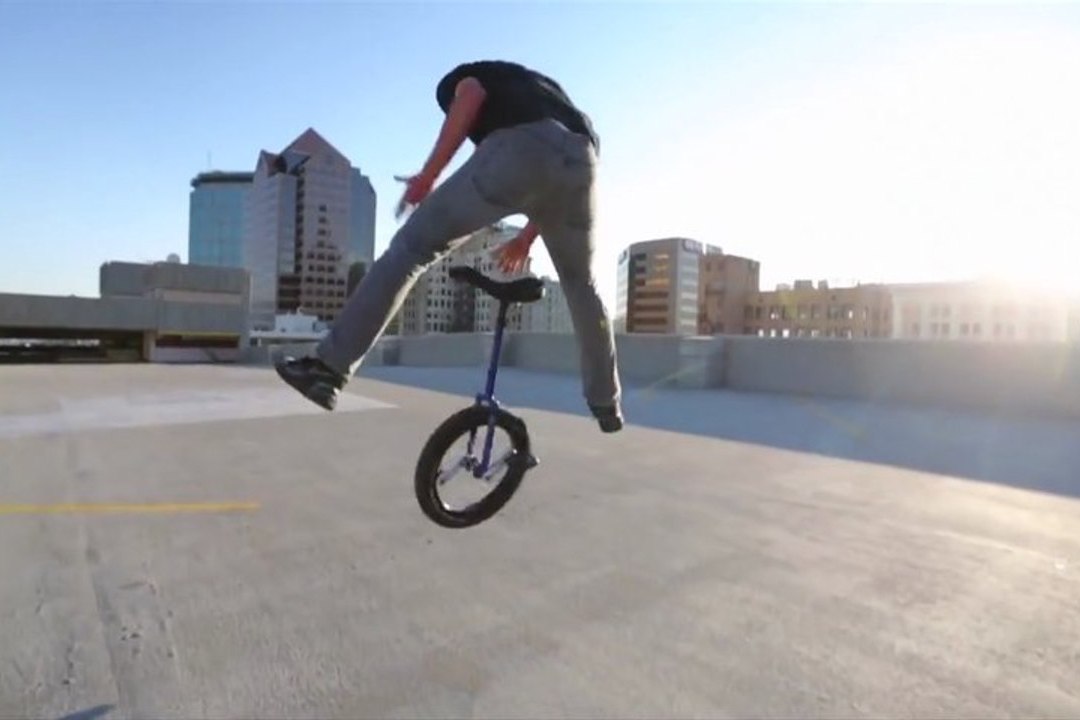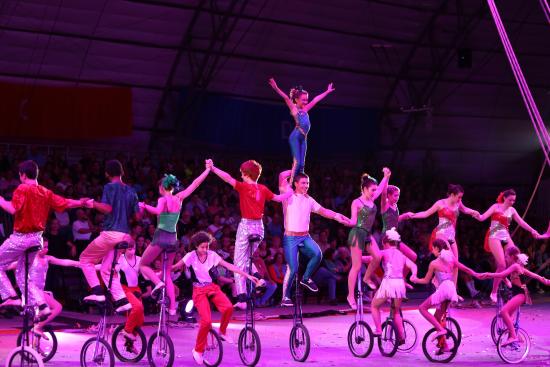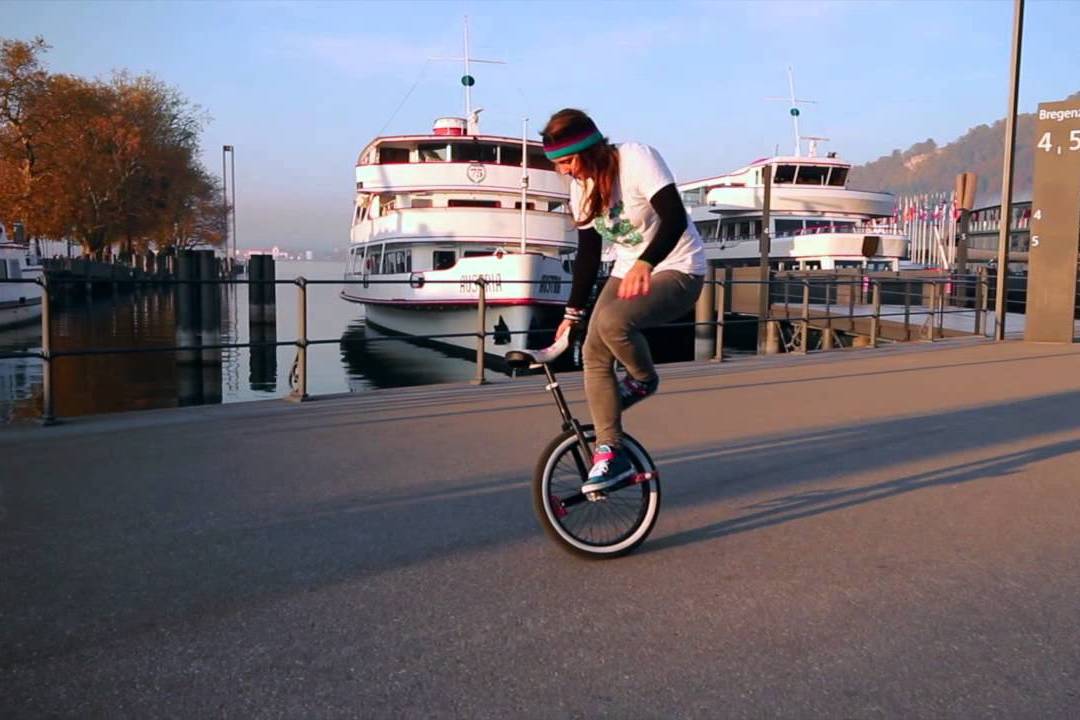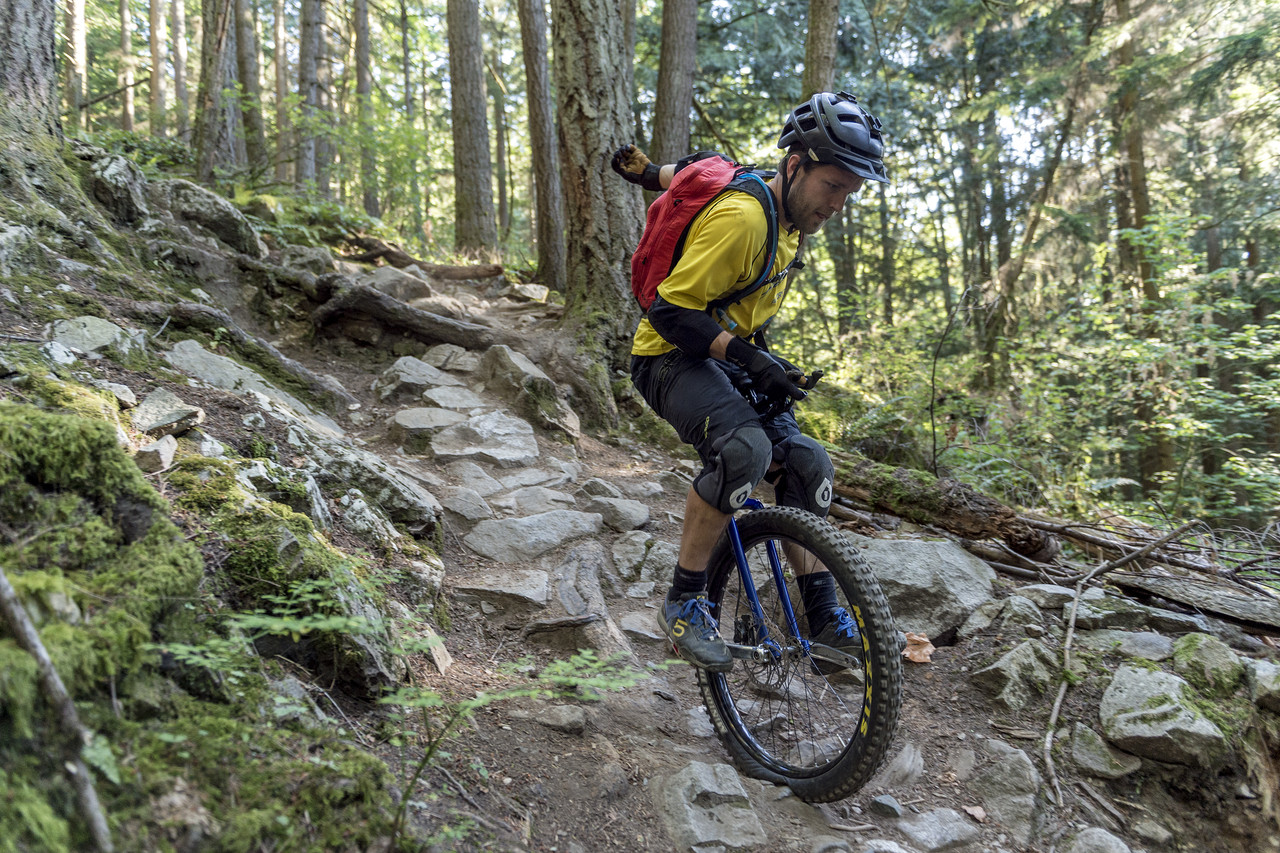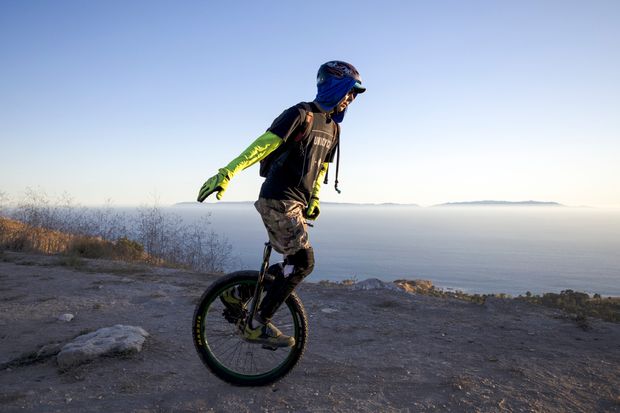The World of Unicycles
A unicycle is a vehicle that touches the ground with only one wheel. The most common variation has a frame with a saddle, and has a pedal-driven direct drive. A two speed hub is commercially available for faster unicycling. Unicycling is practiced professionally in circuses, by street performers, in festivals, and as a hobby. Unicycles have also been used to create new sports such as unicycle hockey. In recent years, unicycles have also been used in mountain unicycling, an activity similar to mountain biking or trials.
History & Construction
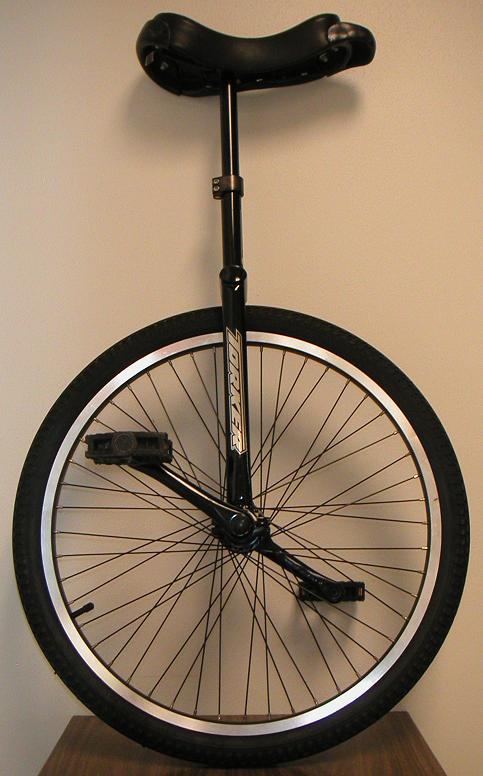
US patents for single-wheeled ‘velocipedes’ were published in 1869 by Frederick Myers and in 1881 by Battista Scuri.
Unicycle design has developed since the Penny Farthing and later the advent of the first unicycle into many variations including: the seatless unicycle (“ultimate wheel”) and the tall (“giraffe”) unicycle. During the late 1980s some extreme sportsmen took an interest in the unicycle and modified unicycles to enable them to engage in off-road or mountain unicycling, trials unicycling and street unicycling.
Bicycles, tricycles and quadracycles share (with minor variations) several basic parts including wheels, pedals, cranks, forks, and the saddle with unicycles. Without a rider, unicycles lack stability – however, a proficient unicyclist is usually more stable than a similarly proficient rider on a bicycle as the wheel is not constrained by the linear axis of a frame. Unicycles usually, but not always, lack brakes, gears, and the ability to freewheel. Given these differences, the injuries that can occur from unicycle use tend to be different from that of bicycle use. In particular, head injuries are significantly less likely among unicycle use compared to bicycle use.
Unicycles have a few key parts: the wheel (which includes the tire, tube, rim, spokes, hub and axle), the cranks (which attach the pedals to the wheel hub), the hub (connects the spokes to a central point and also transfers pedaling power to the wheel), pedals, a fork-style frame, the seatpost, and the saddle (the seat of the unicycle).
The wheel is usually similar to a bicycle wheel with a special hub designed so the axle is a fixed part of the hub. This means the rotation of the cranks directly controls the rotation of the wheel (called direct drive). The frame sits on top of the axle bearings, while the cranks attach to the ends of the axle, and the seatpost slides into the frame to allow the saddle to be height adjusted.
Unicycle Types
Touring/Commuter Unicycles
Used for long distances, these unicycles are specially made to cover distances. They have a large wheel diameter, between 26 and 36 in., so more distance is covered in less pedal rotation. A 36" unicycle made by the Coker Tire company started the big wheel trend. Some variations on the traditional touring unicycle include the Schlumpf “GUni” (geared unicycle), which uses a two-speed internal fixed-geared hub. Larger direct-drive wheels tend to have shorter cranks to allow for easier cadence and more speed. Geared wheels, with an effective diameter larger than the wheel itself, tend to use longer cranks to increase torque as they are not required.
Trials Unicycles
Designed for unicycle trials, these unicycles are stronger than standard unicycles in order to withstand the stresses caused by jumping, dropping, and supporting the weight of the unicycle and rider on components such as the pedals and cranks. Many trials unicycles also have wide, 19- or 20-inch (510 mm) knobby tires to absorb some of the impact on drops.
Freestyle Unicycles
Generally used for flatland skills and freestyle routines, freestyle unicycles typically have a relatively high seatpost, a narrow saddle, and a squared fork (used for one-footed tricks). These unicycles are used similarly to flatland bicycles. Wheel size is usually 20 inches (510 mm), but smaller riders may use 16-or-12-inch (410 or 300 mm) unicycles. Some people prefer 24-inch (610 mm) wheels.
Mountain Unicycles
Mountain unicycling (abbreviated to muni or mUni) consists of riding specialized unicycles on mountain bike trails or otherwise off-roading. Mountain unicycles have thicker, wider tires for better traction. Riders may occasionally lower air pressure for increased shock absorption. Many riders choose to use long cranks to increase power when riding up hills and over rough terrain. A disc brake is sometimes used for descents; the brake handle is attached to the underside of the handle on the front of the saddle.

